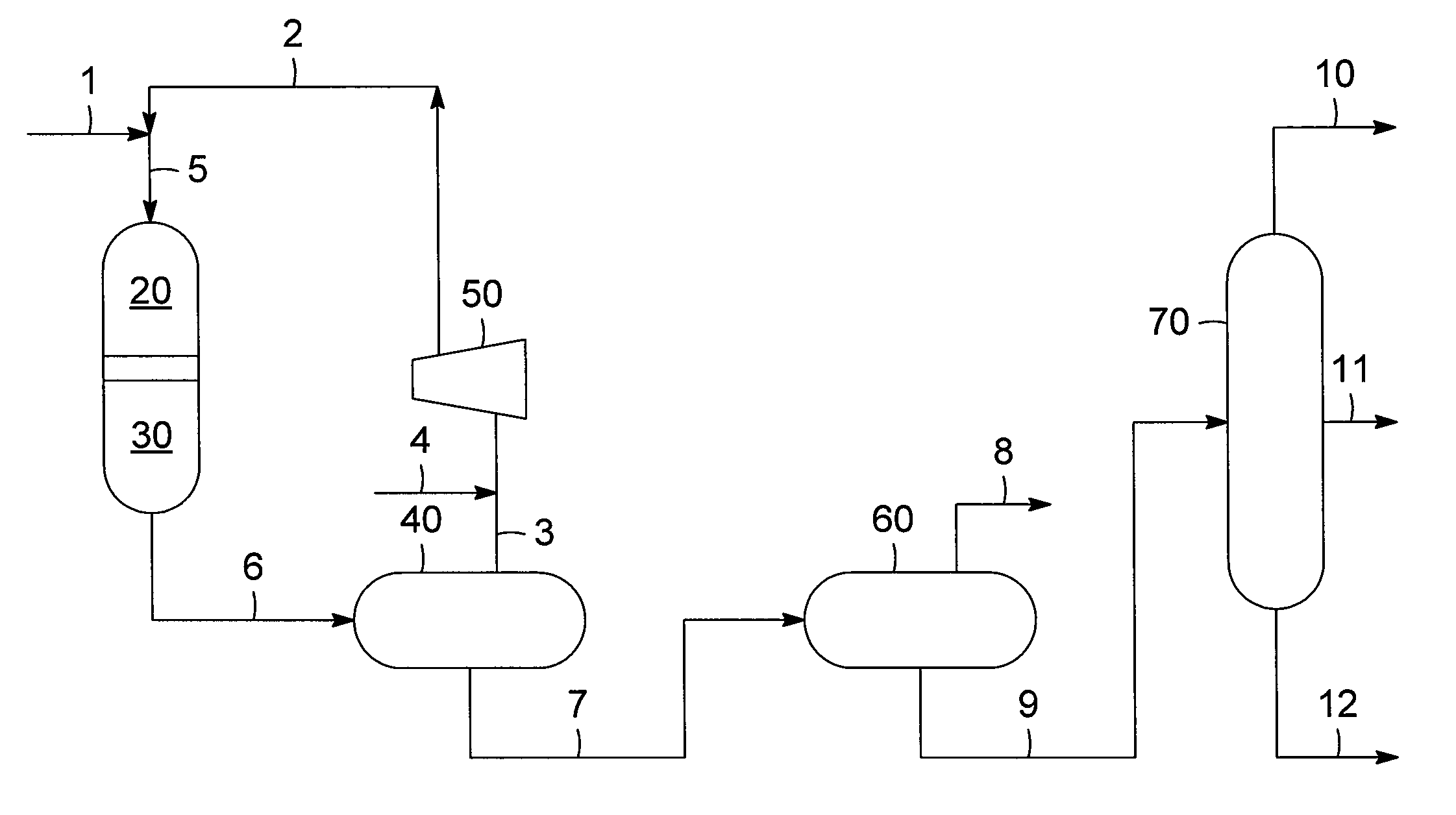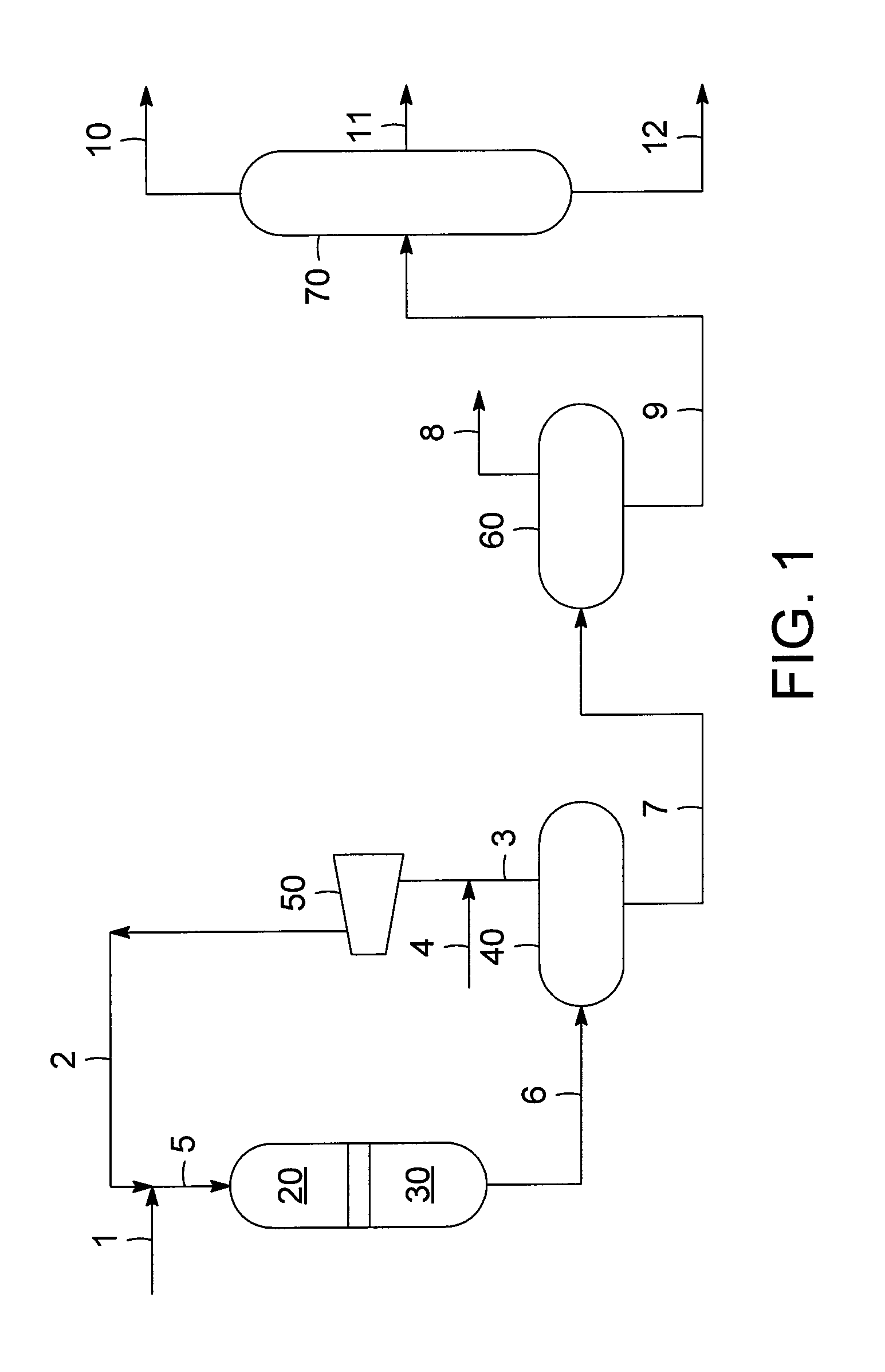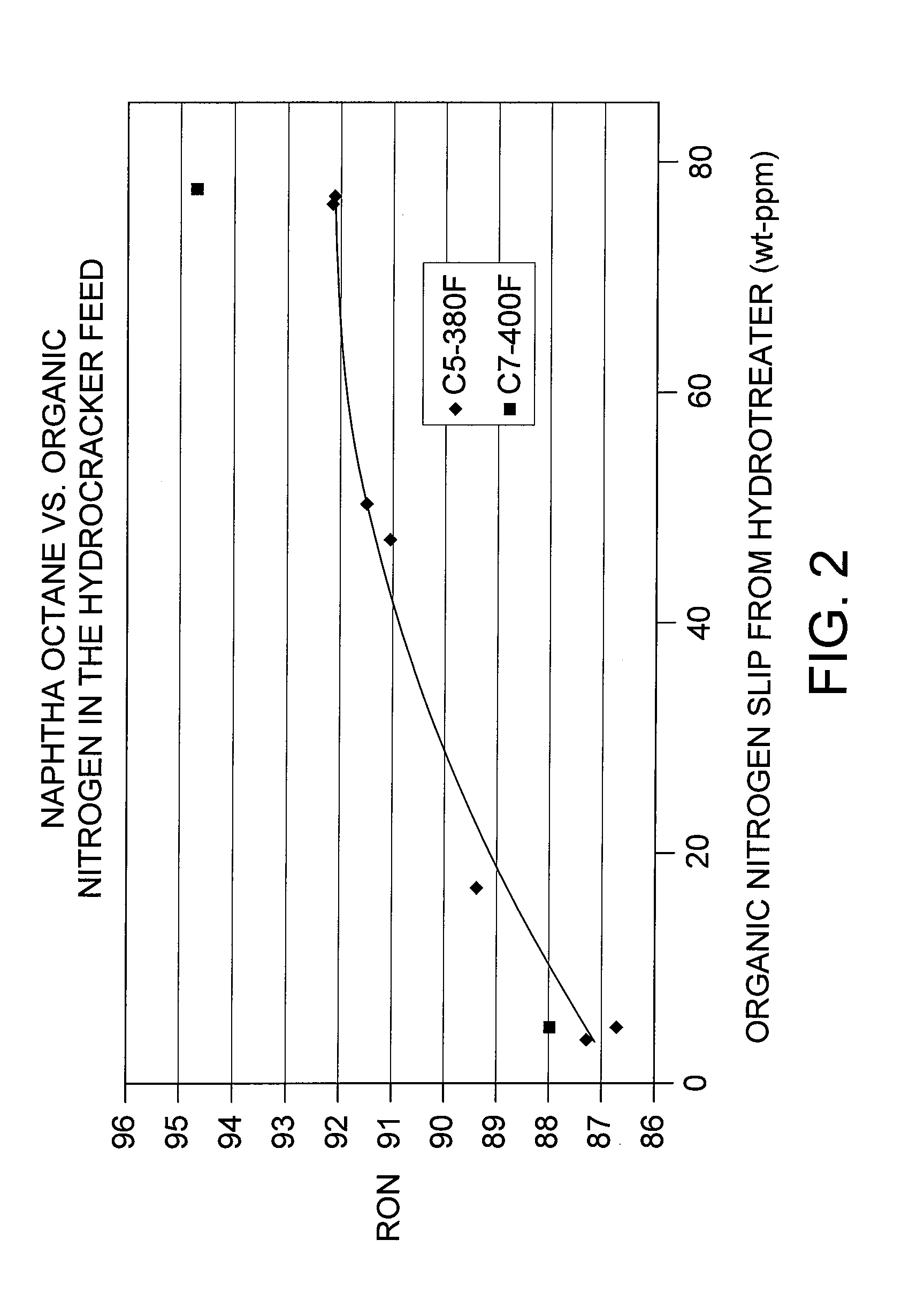Combination of mild hydrotreating and hydrocracking for making low sulfur diesel and high octane naphtha
a technology of high octane naphtha and hydrocracking, which is applied in the field of conversion of petroleum distillates, can solve the problems of excessive hydrogen consumption, achieve the effects of increasing aromatic retention, reducing the cost of hydrocarbon production, and improving the quality of hydrocarbon products
- Summary
- Abstract
- Description
- Claims
- Application Information
AI Technical Summary
Benefits of technology
Problems solved by technology
Method used
Image
Examples
example 1
[0042]LCO hydrocracking was used to produce high octane gasoline. A reduction in upstream hydrotreating severity, by lowering temperature, lowering pressure, increasing LHSV, and / or introducing a higher severity (e.g., more refractory) feed, was found to improve octane over a range of operating conditions. FIG. 2 illustrates the effect of organic nitrogen “slip” (allowing organic nitrogen to pass from the hydrotreater to the hydrocracker) on gasoline octane, as demonstrated in pilot plant testing results. In particular, increasing the slip of organic nitrogen compounds to the hydrocracker showed as much as a 7 RON improvement, with the most significant effect observed when the organic nitrogen slip is in the range from about 20 to 60 ppm by weight.
[0043]The results in FIG. 2 demonstrate that the optimization of hydrotreater severity is an important parameter in improving gasoline octane. The improvement obtained by allowing organic nitrogen to pass to the hydrocracker was observed f...
PUM
| Property | Measurement | Unit |
|---|---|---|
| bed temperature | aaaaa | aaaaa |
| partial pressure | aaaaa | aaaaa |
| distillation end point temperature | aaaaa | aaaaa |
Abstract
Description
Claims
Application Information
 Login to View More
Login to View More - R&D
- Intellectual Property
- Life Sciences
- Materials
- Tech Scout
- Unparalleled Data Quality
- Higher Quality Content
- 60% Fewer Hallucinations
Browse by: Latest US Patents, China's latest patents, Technical Efficacy Thesaurus, Application Domain, Technology Topic, Popular Technical Reports.
© 2025 PatSnap. All rights reserved.Legal|Privacy policy|Modern Slavery Act Transparency Statement|Sitemap|About US| Contact US: help@patsnap.com



